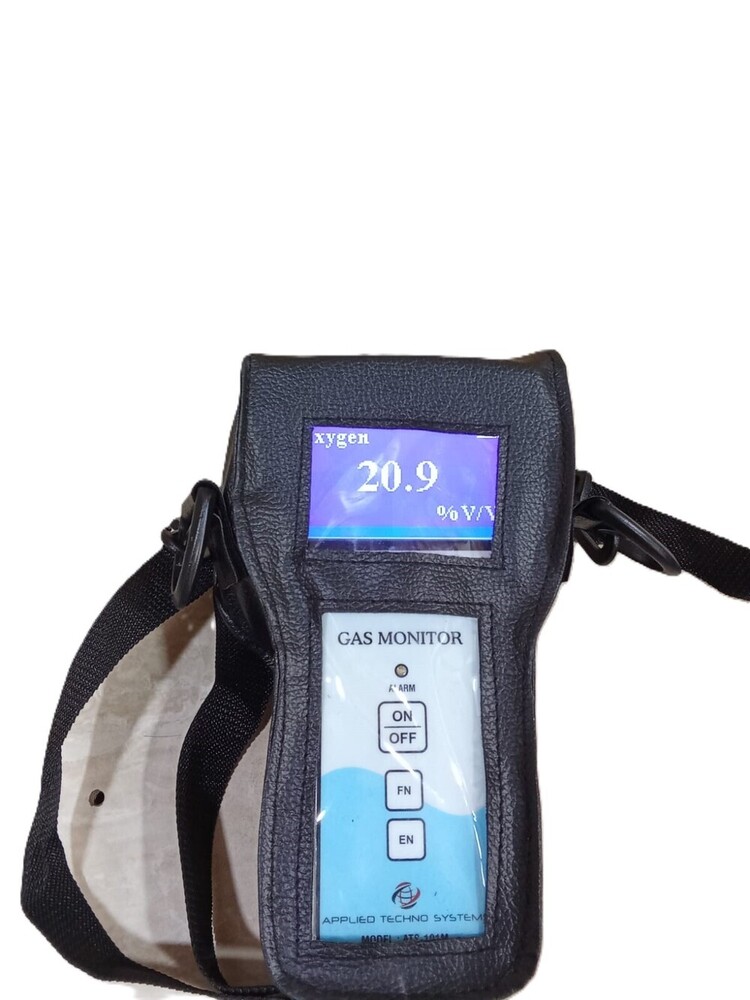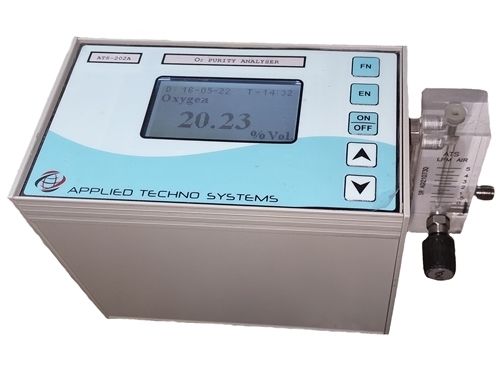- ओस बिंदु मीटर
- गैस विश्लेषक
- पोर्टेबल गैस डिटेक्टर
- नमी और ओस बिंदु विश्लेषक
- धूल मॉनिटर
- गैस निगरानी प्रणाली
- गैस रिसाव डिटेक्टर
- गैस ट्रांसमीटर
- वीओसी लीक डिटेक्टर
- वायु गुणवत्ता निगरानी प्रणाली
- ऑनलाइन सतत उत्सर्जन निगरानी प्रणाली-ओसीईएमएस
- ओस प्वाइंट मॉनिटर्स
- गैस डिटेक्टर
- अपारदर्शिता मॉनिटर
- पोर्टेबल फ़्लू गैस विश्लेषक
- ऑनलाइन एसओएक्स और एनओएक्स गैस विश्लेषक
- मीथेन गैस रिसाव डिटेक्टर
- हाइड्रोजन शुद्धता विश्लेषक
- गैस शुद्धता विश्लेषक
- प्रवाह निगरानी प्रणाली
- निर्माता गैस विश्लेषक
- गैस डिटेक्टर अंशांकन सेवा
- पोर्टेबल गैस मॉनिटर्स
- गैस सेंसर ट्रांसमीटर
Tri Gas/ Turbine gas analyzer
उत्पाद विवरण:
- वोल्टेज वोल्ट (v)
- बिजली की आपूर्ति Electric
- तापमान सेल्सियस (oC)
- नमी 85%RH
- रंग Grey
- वज़न किलोग्राम (kg)
- मटेरियल Mild Steel
- अधिक देखने के लिए क्लिक करें
मूल्य और मात्रा
- 1
उत्पाद की विशेषताएं
- सेल्सियस (oC)
- Electric
- वोल्ट (v)
- Industrial
- Mild Steel
- Grey
- किलोग्राम (kg)
- 85%RH
व्यापार सूचना
- प्रति सप्ताह
- दिन
उत्पाद वर्णन
A tri gas or turbine gas analyzer is a sophisticated device used to measure and analyze the concentrations of three specific gases simultaneously, typically in applications related to combustion processes, emissions monitoring, and industrial processes. These analyzers are crucial for ensuring compliance with environmental regulations, optimizing combustion efficiency, and improving overall safety in various industries, including power generation, petrochemicals, and manufacturing.
Key Features:
- Multi-Gas Measurement: Typically measures three gases, such as carbon monoxide (CO), carbon dioxide (CO2), and oxygen (O2), or other combinations like nitrogen oxides (NOx) and hydrocarbons (HC).
- Turbine Technology: Many turbine gas analyzers utilize advanced technologies such as non-dispersive infrared (NDIR) spectroscopy, electrochemical sensors, and chemiluminescence for accurate gas detection.
- Real-Time Data: Provides continuous real-time monitoring and analysis of gas concentrations, allowing for quick adjustments and decision-making.
- User-Friendly Interface: Often includes an easy-to-read display for viewing real-time data, historical trends, and alarm conditions.
- Communication Capabilities: Equipped with digital communication protocols (e.g., Modbus, Ethernet) for seamless integration with control systems and data logging.
- Alarm Functions: Integrated alarm systems alert users when gas concentrations exceed predefined thresholds, ensuring safety and compliance.
Applications:
- Combustion Monitoring: Used in power plants and industrial boilers to optimize combustion processes and reduce emissions.
- Environmental Compliance: Helps in monitoring emissions from industrial processes to ensure compliance with environmental regulations.
- Gas Turbines: Specifically designed for analyzing gases in gas turbine applications, providing insights into performance and efficiency.
FAQs
What gases can a tri gas analyzer measure?
A tri gas analyzer typically measures combinations of gases such as carbon monoxide (CO), carbon dioxide (CO2), oxygen (O2), nitrogen oxides (NOx), and hydrocarbons (HC).
How does a turbine gas analyzer work?
Turbine gas analyzers use various technologies such as non-dispersive infrared (NDIR) spectroscopy, electrochemical sensors, and chemiluminescence to detect and measure gas concentrations.
What industries commonly use tri gas analyzers?
Tri gas analyzers are widely used in power generation, petrochemicals, manufacturing, and environmental monitoring industries.
How often should a tri gas analyzer be calibrated?
Calibration frequency depends on the specific application and manufacturer's recommendations, but it is generally recommended every 6 to 12 months to maintain accuracy.
What are the typical output signals from a turbine gas analyzer?
Outputs may include analog signals (4-20 mA), digital communication protocols (Modbus, Ethernet), and alarm signals for integration with control systems.
Can a tri gas analyzer be used for emissions monitoring?
Yes, tri gas analyzers are essential for emissions monitoring, helping to ensure compliance with environmental regulations and improve air quality.
What maintenance is required for a tri gas analyzer?
Regular maintenance includes cleaning the sensors, checking the calibration, replacing filters if applicable, and inspecting electronic components.
What factors can affect the performance of a tri gas analyzer?
Environmental conditions such as temperature, humidity, and the presence of interfering gases can impact performance. Proper calibration and maintenance can help mitigate these effects.
Are tri gas analyzers portable?
Some models are designed for portability, making them suitable for field measurements, while others are installed in fixed locations for continuous monitoring.
How do I interpret the readings from a tri gas analyzer?
Readings are typically displayed on the devices screen, showing the concentration of each measured gas. Users should refer to the manufacturer's manual for specific details on interpreting results and understanding alarm conditions.

Price: Â
- 50
- 100
- 200
- 250
- 500
- 1000+








 English
English Spanish
Spanish French
French German
German Italian
Italian Chinese (Simplified)
Chinese (Simplified) Japanese
Japanese Korean
Korean Arabic
Arabic Portuguese
Portuguese